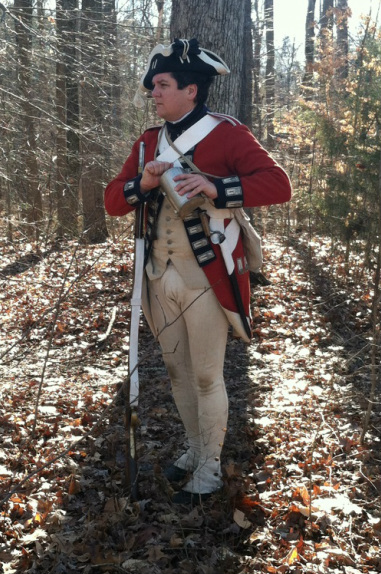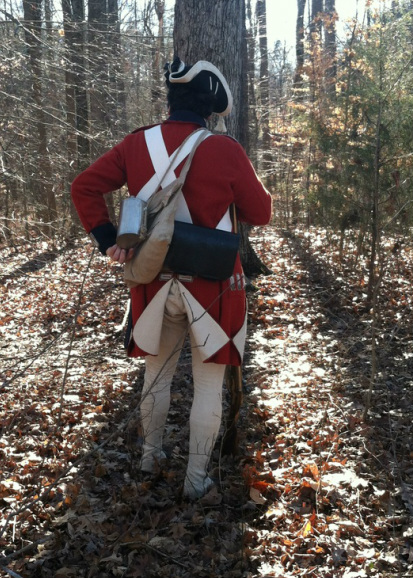Charleston, 1780
Late in 1779, General Henry Clinton sailed south from New York City with a force numbering nearly 14,000 strong. All 10 companies of the Royal Fuziliers, at full strength, were with the force. The Light Company with the 1st Light Infantry Battalion, the Grenadier Company with the 1st Grenadier Battalion, and the Battalion Companies brigaded with the 23rd Regiment, Royal Welsh Fuziliers. Clinton's force besieged the city, which resulted in the largest American surrender until 1942. After the siege, the Royal Fuziliers were assigned garrison duty, helped secure supply and communication lines and constructed fortifications as far west as Camden.
As a fuzilier regiment, the 7th was entitled to wear a bearskin fuzilier cap. However, the regiment's caps had all been captured in Canada in 1775 and were never replaced. The Royal Fuziliers instead wore a cocked hat with white loops and tassels but no edge binding. By 1779, the regiment adopted white wool edge binding for their hats as evidenced by a deserter description from that year. The waistbelt is still slung over the shoulder and drill trousers help keep the men cooler in the hot southern climate.
As a fuzilier regiment, the 7th was entitled to wear a bearskin fuzilier cap. However, the regiment's caps had all been captured in Canada in 1775 and were never replaced. The Royal Fuziliers instead wore a cocked hat with white loops and tassels but no edge binding. By 1779, the regiment adopted white wool edge binding for their hats as evidenced by a deserter description from that year. The waistbelt is still slung over the shoulder and drill trousers help keep the men cooler in the hot southern climate.


